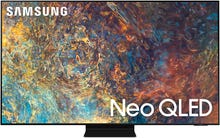
In my particular lounge room sits a relic of a time long gone, a 15-year-old plasma TV that is dumb as a box of hammers, and thankfully so. As the years go by, I am increasingly grateful that this piece of technology continues to kick on.
Of course at some stage, I will need to trudge into the increasingly awful world of smart TVs, but the longer that takes the better.
In recent weeks, TV makers have upped the annoyance and intrusion factor in their so-called smart devices.
Vizio announced it had started a beta with Fox in the US to insert ads during the credits of a show in an effort to push users onto the broadcaster’s streaming service.
“Jump ads give participating programmers and brands the ability to present an interactive overlay at the conclusion of linear TV programs, directing viewers into a supporting app on Vizio’s operating system to continue their viewing experience,” Vizio said.
“The Jump Ads will prompt viewers to continue watching additional episodes of the program or catch up on past episodes on the Fox Now App … this allows viewers to seamlessly extend their viewing experience with a single click of a button, enhancing the smart TV experience for both viewers and content providers alike.”
Vizio said ad buyers can control at what point the ads appear, how often they do, and which app the ad points to — and as we’ve learnt after some years at the nexus of advertising and technology, there is no way this seemingly helpful pointer to users will be extended to promote anything, at any time, anywhere in a broadcast. I’d suggest asking, “Why stop at one ad?”, but I really don’t want to give marketers any ideas.
Not to have the likes of Vizio offering equal functionality, fellow TV ads inserter Samsung has taken a step into the world of blockchains and TV.
The Korean behemoth said last week it has partnered with crypto exchange Gemini and its Nifty Gateway to integrate NFTs on its smart TV platform, allowing users to buy, sell, and view the assets on its 2022 premium TV lines including QLED and Neo QLED.
Get a new one anyway: Best OLED TV
Most pleasingly from Samsung is this helpful guide to stop your smart TV from being hacked or running malicious code — it involves turning on “smart security”, and call me a cynic but it probably doesn’t do what it says on the tin.
The problem with TVs, as my venerable Panasonic display shows, is the lifespan of such devices. No one is going to support a non-desktop consumer device’s operating system and make sure it is secure for almost 15 years after it was made. To give an idea of the longevity of this TV, when it arrived, Android 1.0 was being released. Imagine how long it would take to pop this device if it was able to browse the internet.
Samsung needs to be on top of its security to ensure its TVs remain safe, because wherever you find crypto assets, you bet there’s someone who has worked out a way to steal it, and is maybe even using it on OpenSea.
Beyond this pair of TV makers, it is not as though the industry has any saints, LG was doing ads years ago, and Sony says in a support article that users cannot turn ads off and points the finger at Google.
Besides, there is no reason for manufacturers to make anything but smart TVs for consumers, especially when the answer to those who have issues about smart features is to retort with a line about not connecting it to the internet in the first place.
That could work — unless you live near a radio telescope and cannot have a device spamming out Wi-Fi and Bluetooth signals as long as it is connected into a power socket, and the suggested answer is to open the TV and cut its antenna off — but it doesn’t solve the issue of potentially paying thousands of dollars for a device that upgrades itself and pushes increasing amounts of advertising at you. That sort of user experience is best left in the hands of Microsoft to pioneer on its own.
After living with smart Wi-Fi for a number of years where setting options are being increasingly pared back by Google, I was recently blasted back into a world where the user can overwrite the so-called artificial intelligence. It didn’t fix everything, but it was delightful to have options again.
The TV landscape is far beyond that point, search for dumb options and you’ll end up thinking about buying commercial signage devices or looking to use a big computer monitor as a TV — neither of which are proper fits.
It’s a shame TVs have become purchases that cost possibly in the thousands of dollars and for their coin, new owners end up with yet another ad-serving device that will have firmware updates end in a couple of years, if they are lucky. Because as a base concept, TVs exist purely to show someone what they want to see. It shouldn’t be this hard.
But if you want to see a low-res pixel art NFT upscaled to glorious 8K resolution, you know which Korean tech giant you need to buy from.
ZDNet’s Monday Morning Opener is our opening take on the week in tech, written by members of our editorial team. We’re a global team so this editorial publishes on Monday at 8:00am AEST in Sydney, Australia, which is 6:00pm Eastern Time on Sunday in the US, and 11:00PM in London.





















